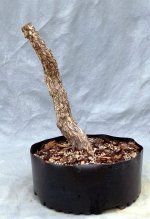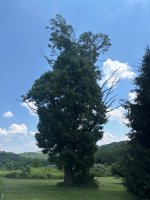TurboFork
Seed
Hi Everyone,
After a trip to the National Bonsai Museum in DC I have been inspired enough to give this hobby a try! I've read a couple books and done a fair bit of research, but haven't actually purchased my first trees yet. My local Bonsai society is having their auction in a couple weeks, and I will probably grab a couple of trees there.
That being said! I have already been struck with a bit of inspiration. My family has lived on a farm for nearly 100 years. We have been there so long that the road is named after us! A staple piece of the family farm is a large and old ash tree in our backyard. It's persevered through a lot of adversity, but is now beginning to die. Similar to the tree, our family's time on the old farm is starting to draw to a close as well. I want to preserve both the tree, and the family history it represents, in bonsai form as best I can through cutting and propagation while I still have a shot.
Now I realize I am as beginner as it gets. From what I have read, propagating an ash tree is a difficult task for someone advanced, so doing this is probably a pretty bad idea. I'm going to try it anyway. I was hoping you guys could help me increase my odds of success with some tips and tricks for beginners when propagating! Bonus points if you have worked with Ash before. A couple specific questions I have:
Thank you all for helping a beginner out!
After a trip to the National Bonsai Museum in DC I have been inspired enough to give this hobby a try! I've read a couple books and done a fair bit of research, but haven't actually purchased my first trees yet. My local Bonsai society is having their auction in a couple weeks, and I will probably grab a couple of trees there.
That being said! I have already been struck with a bit of inspiration. My family has lived on a farm for nearly 100 years. We have been there so long that the road is named after us! A staple piece of the family farm is a large and old ash tree in our backyard. It's persevered through a lot of adversity, but is now beginning to die. Similar to the tree, our family's time on the old farm is starting to draw to a close as well. I want to preserve both the tree, and the family history it represents, in bonsai form as best I can through cutting and propagation while I still have a shot.
Now I realize I am as beginner as it gets. From what I have read, propagating an ash tree is a difficult task for someone advanced, so doing this is probably a pretty bad idea. I'm going to try it anyway. I was hoping you guys could help me increase my odds of success with some tips and tricks for beginners when propagating! Bonus points if you have worked with Ash before. A couple specific questions I have:
- What should I look for on the tree that tells me I should create a cutting from that specific portion?
- Is there a specific strength rooting powder I should use? I was looking at Hormex #8
- What are some of the biggest keys, beyond lots of praying, to give these cuttings a chance at rooting?
Thank you all for helping a beginner out!












